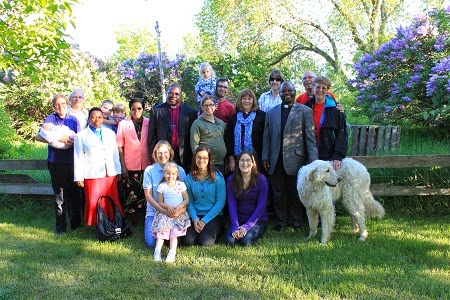John
Gee, a member of the Diocese of Edmonton, is currently in Burundi,
working in the Diocese of Buye for a three-month stint. We welcome this
guest post to the blog.
The
Diocese of Buye has operated a Bible college since the 1930s.
Originally it served a catchment area including all of Burundi,
Rwanda, and the eastern Congo, and was funded by the Church
Missionary Society (CMS) in England. CMS discontinued its funding a
few years ago, but the need for the college is as great as ever. With
nearly 300 congregations, the diocese has a great and ongoing need
for clergy, and the available alternatives for theological education
are few. The nearest accredited Anglican seminaries are in Uganda and
Kenya and the cost of going there is prohibitive for most Burundians.
This
year, thanks to funding from the Diocese of Edmonton, the college is
able to operate at its full capacity of 28 students for the first
time in many years. Three of the students are women, which is the
highest representation ever. Three of the men are in their third year
and, God willing, will be ordained deacon next spring; all the others
are in their first year. They are all experienced catechists from
parishes throughout the diocese. Catechists are somewhat similar to
lay readers and are a key component of the church in Africa, where
there are never enough ordained pastors to conduct weekly services at
all of the churches. Most of them are married with children, so
coming to Buye for full-time education represents a considerable
personal sacrifice.
The
curriculum includes scripture, theology, church history, homiletics,
liturgy, and pastoral training, as well as practical subjects
including English, French, mathematics, health, and music. There are
two full-time instructors plus a number of diocesan clergy (including
the bishop) who teach individual courses. A careful process of
discernment takes place throughout the three years of course work and
summer placements. Some of the students will likely return to their
parishes after one year as well-trained catechists; others who are
found to have a vocation to the priesthood will stay for two more
years and be ordained.
The
college is an integral part of the Buye Hill complex which also
includes the cathedral, hospital, secondary school, and residences
for the bishop and other clergy, who have already noticed the renewed
energy from having 28 highly committed students on site. All of them
have asked me to convey their thanks to the Diocese of Edmonton for
its help, which has come at a critical time and will make a lasting
difference for the Diocese of Buye.















































